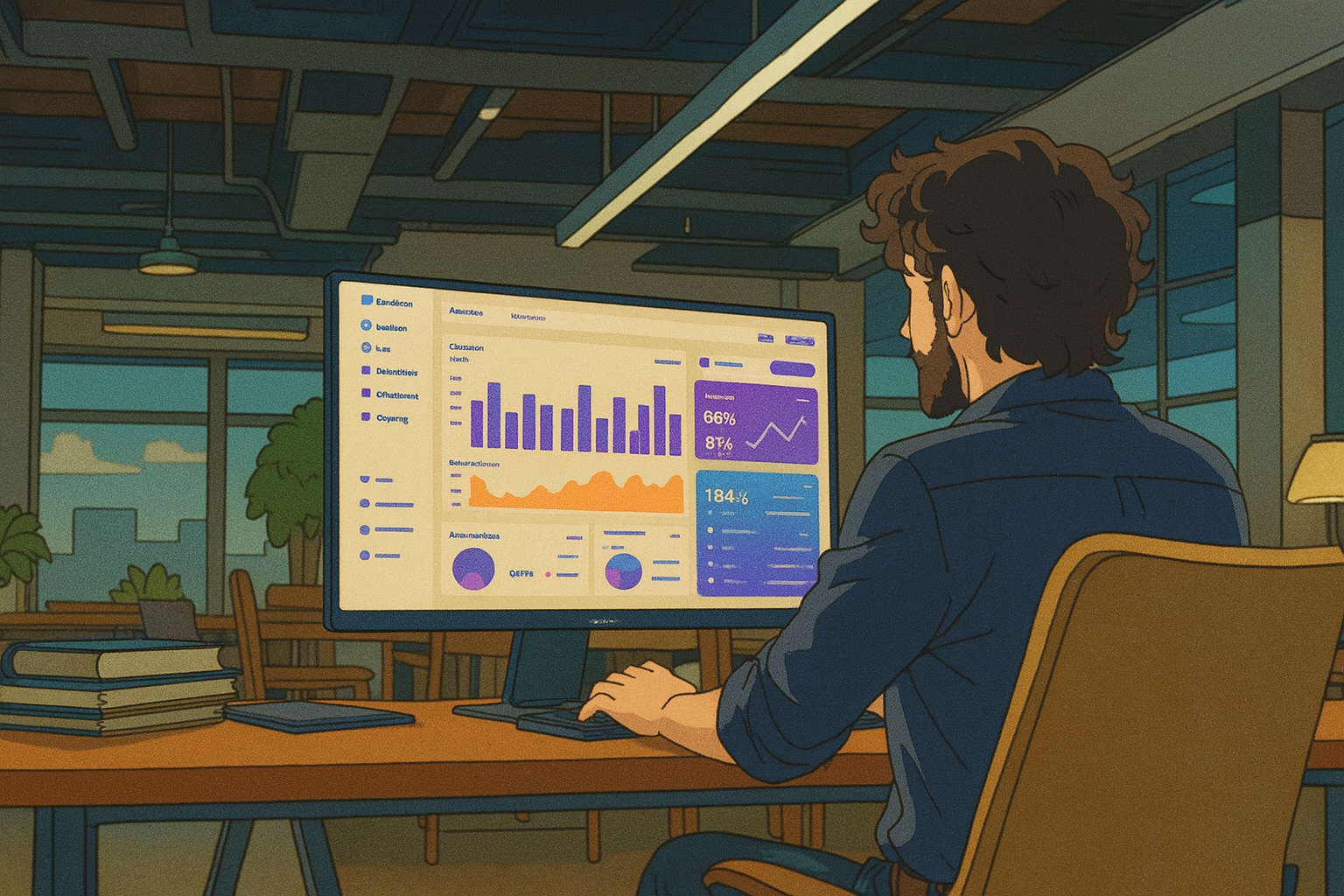I combine logistics expertise with design to deliver seamless, industry-leading digital solutions for shipping and supply chains.

Why I Stopped Wireframing & Started Designing at the Speed of Freight
I’ve moved away from wireframing as a core part of my design process—not out of haste, but because the kind of systems I build, particularly in logistics, demand speed, clarity, and tangible interaction. Instead of sketching abstract layouts, I prototype directly in high fidelity using a custom-built component system that reflects how the final product works. This approach enables real-time collaboration, clearer feedback, and faster decision-making. It’s not about skipping steps—it’s about showing something real, early, so people can react, understand, and help shape the outcome.

Why Good UX Is the Best Logistics Tool No One Talks About
This piece draws from my experience building digital tools for logistics, reflecting on the UX principles that make a real difference in high-pressure supply chain environments. It explores the value of exception-driven design over data overload, the importance of intuitive tables and dashboards, and aligning interfaces with users’ mental models. It also highlights the need for real-time collaboration, calm and focused UI, and the continuous loop of feedback and iteration. Ultimately, it argues that great UX in logistics isn’t about making things simple—it’s about making complexity manageable and actionable.

Smarter Freight, Cleaner Planet: My Journey into Carbon Transparency
This piece shares my journey of embedding granular carbon tracking into freight operations to drive real, measurable emissions reductions. By breaking down emissions leg by leg and making the data actionable, we've helped clients—from SMEs to major shippers—make smarter, greener logistics choices. Along the way, we tackled complexity, demystified sustainability for non-experts, and shifted the role of freight from passive emitter to active part of the Net Zero solution. It’s a story about how better data, better tools, and a change in mindset can turn sustainability into a competitive edge.

Lessons from the Floor: Building for Real-World Logistics Pressure
After years in logistics, I’ve learned that managing urgency isn’t about working faster—it’s about seeing clearly. This post shares how a simple idea, sparked by conversations with freight operators, turned into a feature that lets teams instantly prioritise critical shipments and reduce distractions. It’s a small change that’s making a big difference in how we handle the pressure of time-sensitive freight.

Precision Over Volume: Rethinking Data Visibility for Logistics Teams
In a complex logistics environment, more data isn’t always better—clarity is. One experience with a global food and drink manufacturer highlighted the challenge of information overload: talented teams were buried in irrelevant updates, leading to missed deadlines and growing frustration. In response, we developed a way for teams to define their own visibility—focusing only on what mattered to their role, region, or responsibility. The impact was immediate: sharper focus, faster decisions, and fewer internal escalations. The key takeaway? In logistics, scaleable clarity isn’t a luxury—it’s a necessity.

Making Freight Flow: A Personal Take on Digital Transformation
Building a digital freight management platform from scratch has been one of the most rewarding challenges of my career. What started as a vision to modernise logistics has grown into a tool that genuinely supports collaboration across the supply chain. From shared access models and real-time alerts to smarter document handling and compliance tools, every feature has been shaped by real-world feedback. The focus isn’t just on solving problems—it’s on bringing people together to solve them better. It’s been a journey of learning, listening, and building tech that actually works for the people who keep freight moving.

How Real-World Challenges Have Shaped My Approach to Building Tools
Looking back on what we’ve built, I’m proud of how our freight platform has evolved from an idea into a tool that genuinely helps people in logistics. Recent updates—like real-time customs notifications, invoice downloads, and delay severity tracking—are all driven by real-world feedback. They’re not about flashy features; they’re about solving everyday problems. Whether it’s finance teams chasing paperwork or ops teams navigating delays, we’re building tools that simplify, scale, and fit how people actually work. It’s been one of the most rewarding phases of my career—and we’re just getting started.

Breaking the Cycle: A Personal Take on Logistics Innovation
In the midst of the pandemic, I set out to build a freight management platform—not just to patch problems, but to rethink how we handle logistics altogether. With years of industry experience, I was frustrated by the disconnect between the data we generate and the decisions it should support. So I rolled up my sleeves, learned the language of product development, and worked closely with clients and developers to create something truly useful. The result? A tool that simplifies complexity, enables real-time collaboration, and helps logistics teams focus on what matters. It’s been the most challenging and rewarding chapter of my career—and it’s only the beginning.